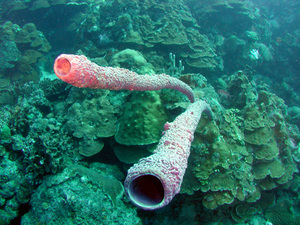The team of mathematicians that first created the mathematics behind the "invisibility cloak" announced by physicists last October has now shown that the same technology could be used to generate an "electromagnetic wormhole." In the study, which is to appear in the Oct. 12 issue of
Physical Review Letters, Allan Greenleaf, professor of mathematics at the University of Rochester, and his coauthors lay out a variation on the theme of cloaking. Their results open the possibility of building a sort of invisible tunnel between two points in space.

|
| ©Unknown
|
| One of the views through the "wormhole." Different lengths result in different bending of light.
|




Comment: Given that the military and CIA are some 30 years ahead of public research into such areas as this - thanks to Project Paperclip which brought over the Nazi scientists to the US, Project Bluebird, MK-ULTRA, Monarch and the like - one wonders how easily they are able to manipulate the public to "buy" their nefarious policies or to predict reactions from "terrorist" events. Yet another reason to believe 9/11 was just such a neuromarketing tool.